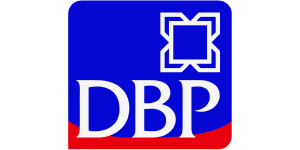
Development Bank of the Philippines
It's the second-largest government-owned bank of the Philippined and the 10th largest bank in general
Products
Description
The Development Bank of the Philippines (DBP) is a government-owned bank that primarily focuses on agriculture and industry development. It is the tenth-largest bank in the country with ₱965,483 million in assets, as per the list published by the Central Bank in 2024. Among the state-owned banks, it is the second largest, just behind the Land Bank of the Philippines.
Products of DBP
DBP has a smaller product selection than commercial banks. For individuals, it offers savings accounts and time deposits, but it doesn’t have a checking account available. The savings accounts include a Visa debit card and there are no credit card offers. Clients can also invest in trust funds, and request salary loans.
The most important products the DBP offers are loans for infrastructure, entrepreneurial, environmental, and community projects. The bank finances small, medium, and large companies in projects that can aid the country’s development.
History of DBP
DBP has its origin in the National Loan and Investment Board (NLIB) which was established in 1935. The objective of the board was to manage government trust funds. Only a few years later, in 1939, the Agricultural and Industrial Bank (AIB) was created and it absorbed all the functions of the NLIB. Then, in 1946, the brand new Rehabilitation Finance Corporation (RFC) absorbed the functions of the AIB.
The RFC continued operating until 1958 when it was reorganized into the Development Bank of the Philippines. This was done to broaden the scope of activities the bank did beyond just rehabilitation. At the time, the DBP had an initial capital of ₱500 million subscribed by the government, intending to expand its operations and accelerate development efforts in the country.
In 1963 Congress increased the DBP’s capitalization and borrowing capacity and in 1966, it started acting as an investment bank as well. During the 70s, the Philippines faced economic slowdown and devaluation of the peso. In response, the DBP cut down on domestic lending operations and focused its attention on countryside development. It lent money to food production and industries that created job opportunities.
In the 1980s there was the oil crisis and worldwide economic difficulties. DBP supported the search and development of energy sources other than oil and focused on bailing out troubled corporations. However, by 1984 several DBP-financed projects defaulted on payments and the development bank suffered a loss for the first time in over 30 years of history.
Following the loss, in 1986 the President ordered a clean-up and reorganization for DBP, along with an infusion of capital. With this, the bank recovered its financial viability and slowly resumed its operations, until reaching full operation in 1988.
In 1992, the bank earned recognition as one of the World’s Top Ten Banks by The Banker. In 1995, the Central Bank granted an expanded banking license and the DBP was able to start operating as a universal bank. In 2002, it earned an ISO 14001 certification for its environmental management, proving its commitment to use resources and manage its waste efficiently.
Throughout the 2000s and 2010s, the DBP grew and earned various awards and recognitions, including the SME Bank of the Year by The Asian Banker–Philippine Country Awards in 2017. In 2021 it also earned the Philippine Quality Award by the Department of Trade and Industry.